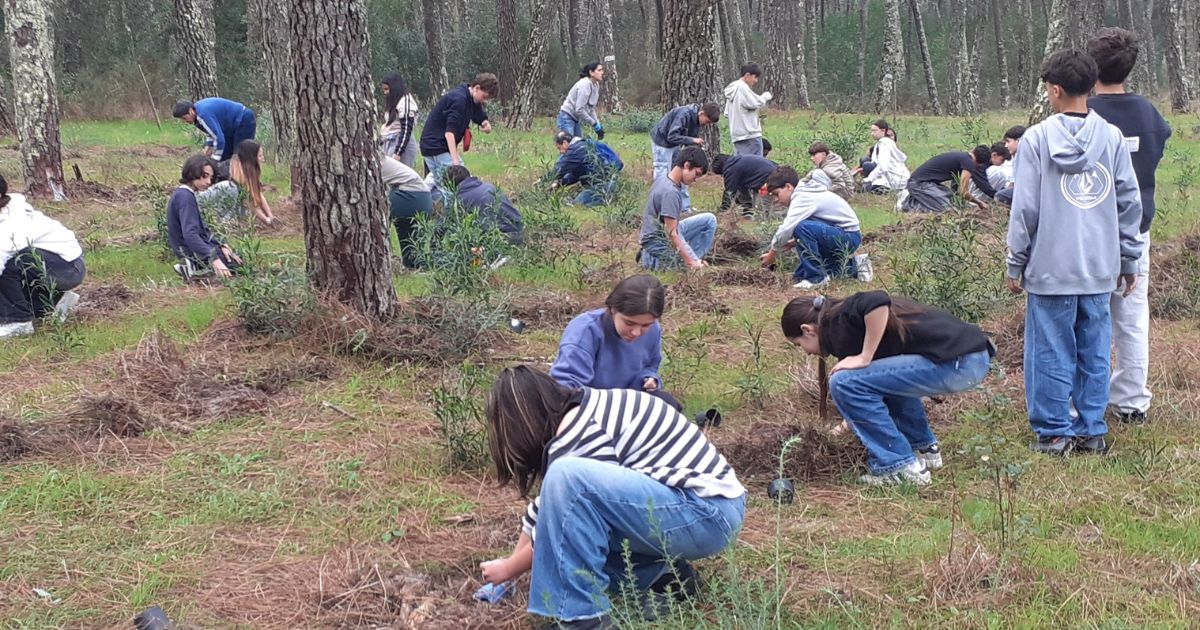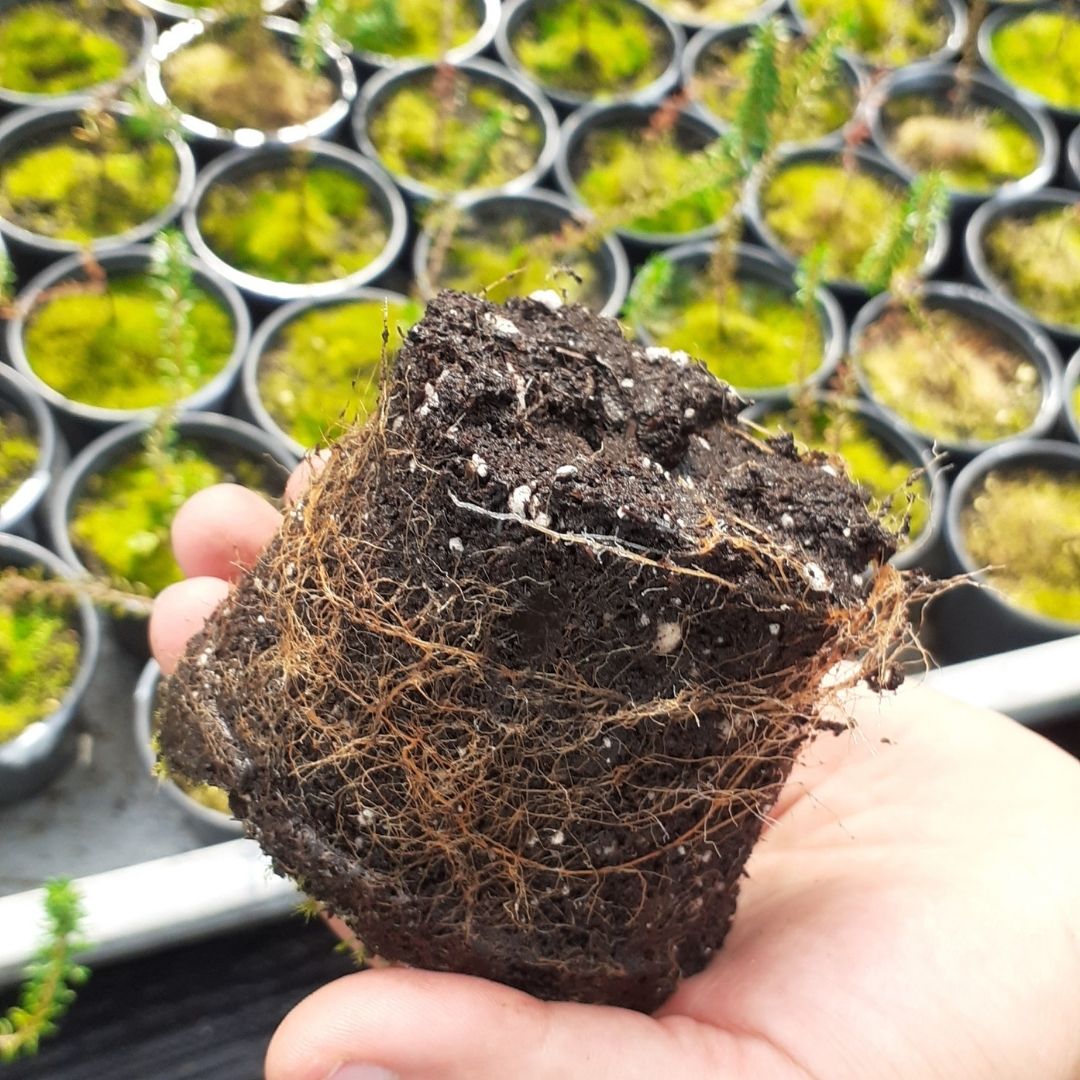Population of Camarinhas trees in Mata do Camarido saved from extinction with the planting of thousands of plants
Between 15 and 18 October 2025, another important step was taken in defending the biogenetic heritage represented by the camarinha (Corema album), with the aim of halting its extirpation (local disappearance) in the Camarido Forest, a reality that has unfortunately already occurred in other areas of Portugal and Galicia. 
The activity, promoted by the COREMA Association and the EMC² Project – Exploring the Scrubland of Camarinhas da Costa (MARE-ARNET), involved 100 students from the 7th and 8th grades of the Caminha Primary and Secondary School and 30 scouts from Group 573 – Seixas (Caminha), who actively participated in planting around 3,000 camarinhas (male and female) in the Camarido National Forest, the Foz do Minho sandbank and the Moledo dune cordon.
The initiative will continue with the planting of a further 1,500 plants in the same areas, reinforcing the recovery of this endemic species and protecting one of its last populations in Alto Minho.
Ongoing conservation work
The conservation of the Caminha sand lizard population is a process that began almost a decade ago, when the COREMA Association launched a project in 2016 to restore and recover the Camarido National Forest and the Moledo Dune, where the species was showing signs of decline.

At the same time, since September 2016, the educational project EMC² – Exploring Matos de Camarinhas da Costa (MARE-ARNET) has been running, which aims to raise awareness and promote the conservation of the species among the school and local community. The project is funded by the Foundation for Science and Technology (FCT) and coordinated by researcher M. Alexandra Abreu Lima (INIAV, I.P. – National Institute for Agricultural and Veterinary Research and MARE – Centre for Marine and Environmental Sciences).
The conservation activity is based on the propagation methodology developed by the team of researcher Pedro Oliveira (INIAV, I.P., Oeiras). This technique was tested in INIAV greenhouses in 2017 and, the following year, the first reintroduction of plants obtained by propagation took place in the Camarido Forest.
The results were promising: in the summer of 2021, the first camarinha fruits appeared, small edible berries that are white or pink in colour, proving the success of the methodology. The process was published and recognised internationally, with a highlight on the Panorama Solutions portal.
A joint effort for biodiversity
The actions developed within the scope of COREMA and the EMC² Project have been supported and partnered by the Municipality of Caminha, the Parish of Moledo and Cristelo, the Union of Parishes of Caminha (Matriz) and Vilarelho, the Raiz da Terra (Vile), the Institute for Nature Conservation and Forests (ICNF), and schools in the municipality of Caminha.
This joint effort has been essential to ensure the survival of the camarinha and preserve an important natural and genetic heritage of the Portuguese coastline, while also promoting community involvement in the protection of biodiversity.
Text by Maria Alexandra Abreu Lima and Patrícia Carvalho
